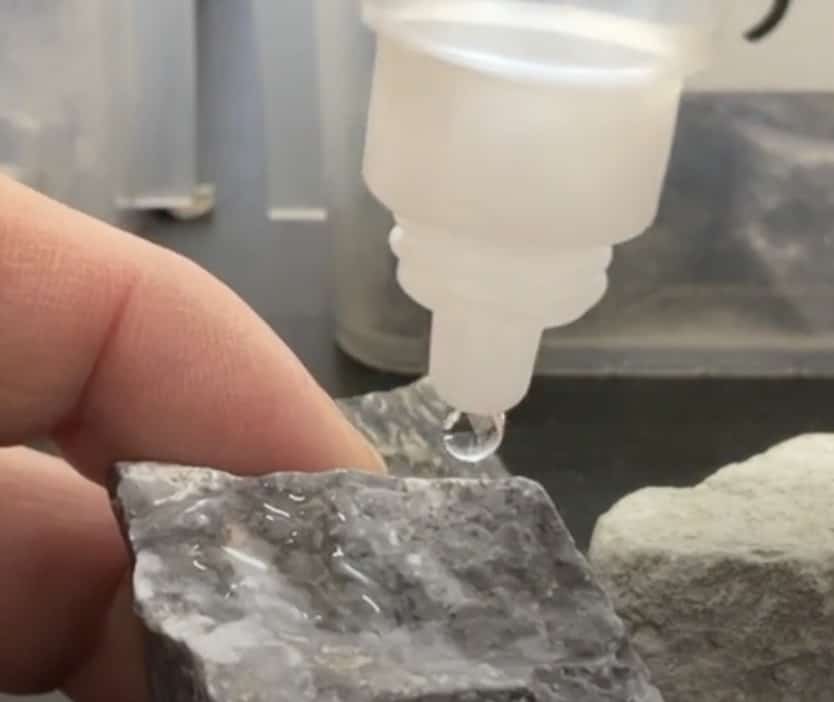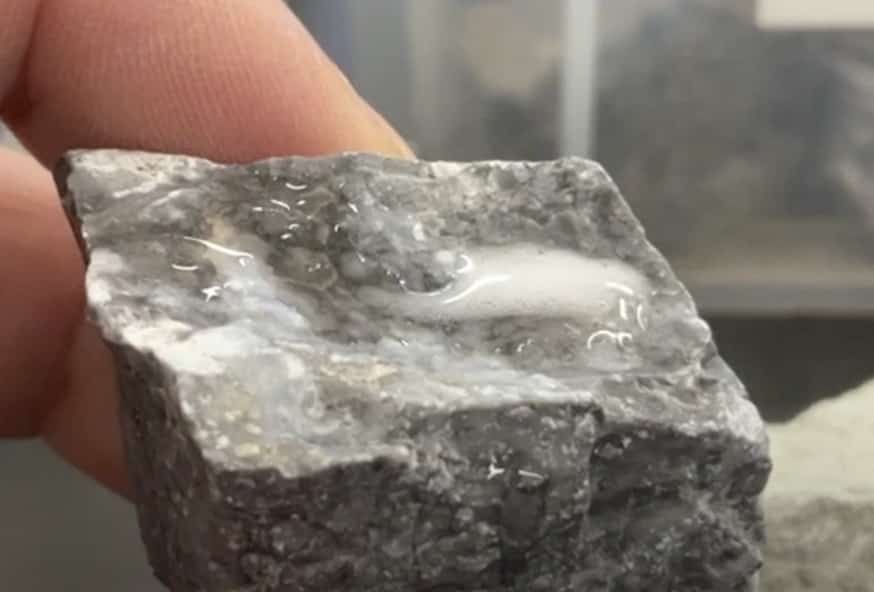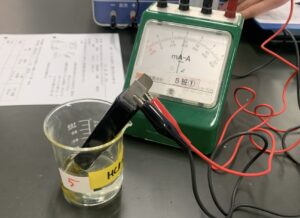When It Fizzes—A Peek into the Ancient Sea! Uncovering the Mystery of Rocks with Just a Drop of Acid (Limestone vs. Chert)
I’m Ken Kuwako, your Science Trainer. Every day is an experiment.
[This article is also available on the radio!]
A smooth, white rock lying on the side of the road. Wouldn’t you want to know its true identity? Like a detective in a forensic investigation, a single drop of a “magic liquid” can unlock the magnificent story of where that rock was born tens of millions of years ago.
Today, we’re diving into the mystery of two rocks that look almost identical: Limestone and Chert.
The Suspects: Two Identical-Looking Rocks
We have two rocks here that look remarkably alike. One is a gift left behind by ancient sea creatures; the other is a hard rock formed from the remains of glass-shelled plankton. Which is which? The key to solving this mystery is hidden in the difference in their chemical composition.
Limestone (Sekkai-gan): Formed from the accumulation of dead organisms from the ancient sea—like coral, shells, and plankton skeletons—on the seabed. Its main component is Calcium Carbonate (CaCO3). The chalk used in schools and the white lines on sports fields are also related to this substance.
Chert: A very hard rock formed over long periods at the bottom of the deep sea from the remains of tiny plankton with glass-like shells, such as radiolarians (hōsan-chū). Its main component is Silicon Dioxide (SiO2). Since it shares the same component as quartz, it is characteristically very hard.
A difference in composition must mean there’s a smoking gun to be found. And that’s where our “magic liquid” comes in: dilute hydrochloric acid.
The Decisive Moment! One Drop of Acid Reveals the Truth
Now, let’s actually drop some dilute hydrochloric acid onto the rocks and observe their reactions. The video also shows a rock called Tuff (Gyōkai-gan), which is solidified volcanic ash, for comparison.
So, what did you see? It was clear that the fizzing and bubbling sound—shuwashuwa in Japanese—only happened when the acid was dropped onto the Limestone!


The identity of these bubbles is Carbon Dioxide (CO
2
). The Calcium Carbonate, which is the main component of limestone, reacted chemically with the hydrochloric acid, producing Carbon Dioxide gas. That’s the source of the ‘fizzing’ sound.
The chemical reaction equation is as follows:
Just one drop of hydrochloric acid has brilliantly exposed the true identity and origin of the rock—something its appearance could never reveal. The next time you find a white rock on the roadside, it might just be a time capsule containing the magnificent story left behind by ancient ocean life.
Contact and Requests
Get closer to the wonders and fun of science! We’ve put together a collection of fun science experiments you can do at home and easy-to-understand tips. Feel free to search around!
• The content from the Science Idea Book is now a published book. Find out more here.
• About the administrator, Ken Kuwako: here
• For various requests (writing, lectures, experiment classes, TV supervision, appearances, etc.): here
• Article updates are distributed on X!
![]() We are releasing experiment videos on the Science Idea Channel!
We are releasing experiment videos on the Science Idea Channel!


